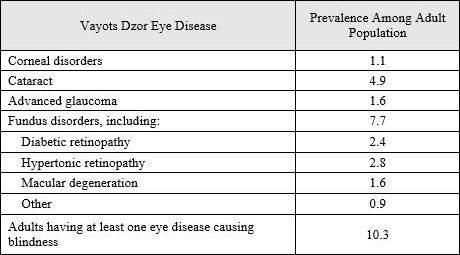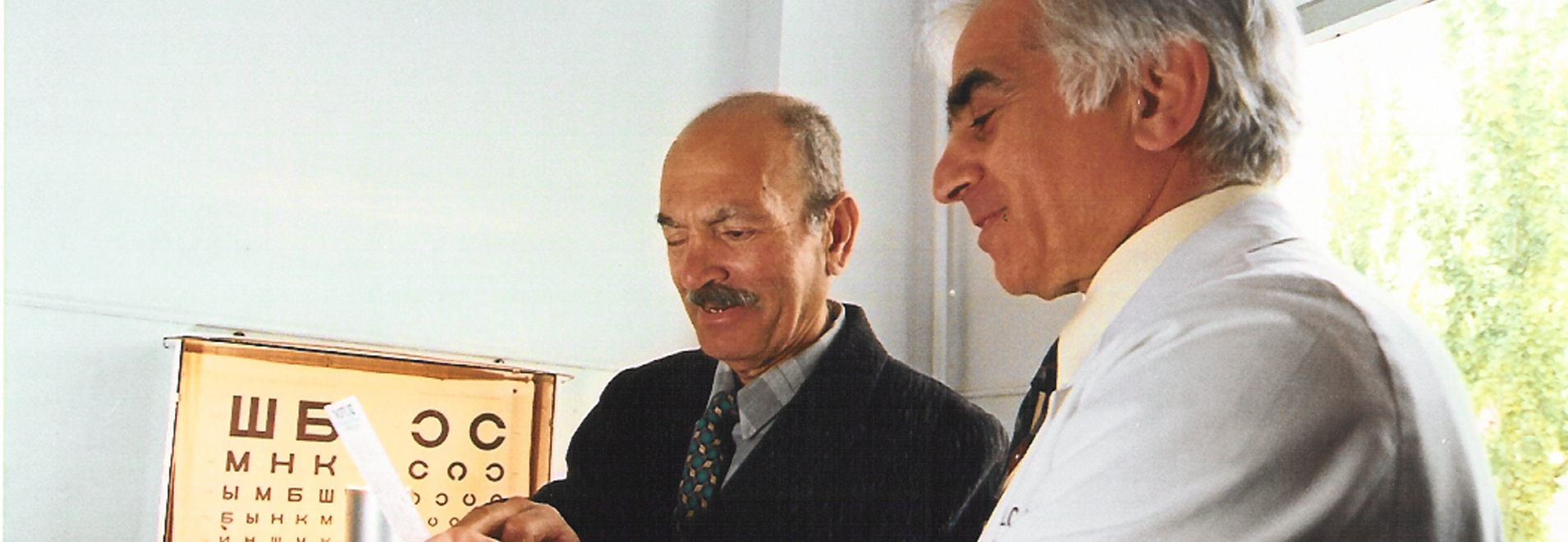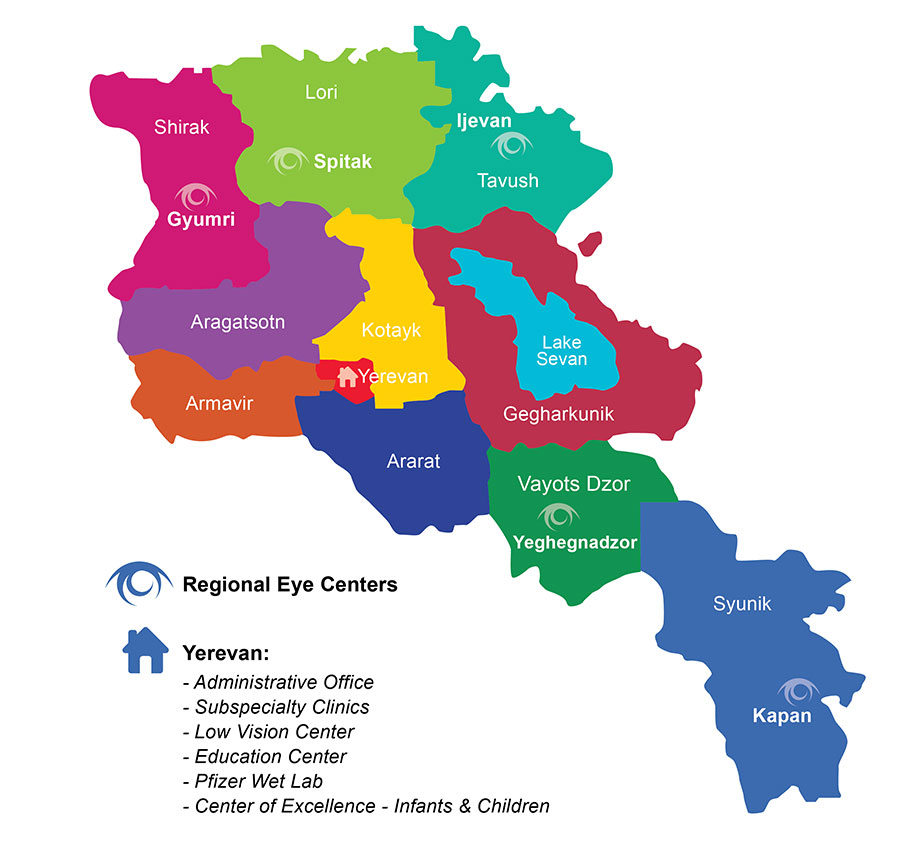Capital:
Yeghegnadzor
Provinces:
Vayk, Yegegnadzor
Cities:
Yeghegnadzor, Jermuk, Vayk
The Vayots Dzor Marz is the most sparsely populated province in the country with 56,000 residents, less than two percent of Armenia’s population. It covers just 891 square miles or eight percent of Armenia’s land mass of 11,506 square miles. There are two provinces — Vayk and Yeghegnadzor — and 44 communities. The residents of Vayots Dzor live in three urban areas — 34.5 percent and 36,700 live in 41 rural areas — 65.5 percent. Three marzes — Syunik, Gegharkunik and Ararat — border Vayots Dzor.
A very poor marz, Vayots Dzor has virtually no industry or agriculture. She contributes just 0.8 percent to Armenia’s production from 12 mines and eight stone processing plants. Agriculture is limited due to a lack of arable land with cattle breeding the primary output. Other serious problems in Vayots Dzor include waste management — some communities do not have sewage systems; forest restoration and maintenance is a global issue; and residents utilize slidelands — lands subject to floods — which further increases the degradation of the soil.
Education
There are 50 secondary schools in Vayots Dzor with 5,876 pupils. In 2012, there were only 564 first graders entering school. As a result of internal and external migration some schools have just two or three students.
Average monthly salary in Vayots Dzor by quarter in 2012, compared to Yerevan:

Healthcare
Vayots Dzor has nine health institutions under regional jurisdiction. These include one medical center, one health center per each urban community and four primary health care centers in rural areas. There are 17 family medicine doctors in Vayots Dzor who provide basic eye care.
In 2012, 83 percent or 1,501 hospital patients were “state order” and just 17 percent or 315 hospital patients were private pay. The governor referred 41 residents of Vayots Dzor to Yerevan — governors are permitted to send a restricted number of patients from their marz to Yerevan hospitals for care, which is delivered at no cost.
Vayots Dzor has a significant problem recruiting and retaining health care professionals with 18 positions currently open. There are four ophthalmologists in Vayots Dzor who see an average of 3,200 patients annually. They provide primary eye care service and eyeglasses, but no surgery.
None of the medical centers in the Marz have ophthalmology departments to provide secondary or tertiary eye care services; there are no private eye clinics; and there are no physicians who will visit the marz on a regular basis to perform eye surgeries. Currently the residents of Vayots Dzor visit their local ophthalmologist for basic eye care and eyeglass prescriptions and for surgery or serious eye disease they must travel to Yerevan.
The EyeCare Project has been making bi-annual visits to Vayots Dzor with the Mobile Eye Hospital since 2003, and has been able to provide preventive screening and eyeglass prescriptions for all residents at no charge. The AECP has also provided laser treatment and surgeries (primarily cataract) for the poor at no cost. Below are the numbers for the MEH visits to Vayots Dzor.
During the AECP’s 2012 mission to Vayots Dzor, 2.1 percent of patients were diagnosed with advanced glaucoma, 14.5 percent with cataract, 1.2 percent with corneal disorders and 17.8 percent with fundus disorders. Using this data along with the demographic characteristics of Vayots Dzor the AECP estimated the prevalence of eye diseases among the adult population (16 and over) in the Marz.

The government of Vayots Dzor tells us that the best location for an eye center will be in the new medical center in the capital city of Yegheghnadzor, scheduled for completion in 2016. The Armenian government will donate the space and build it out according to the specifications for an eye center — reception area, examination rooms, outpatient surgery and eyeglass area. The EyeCare Project will provide all of the necessary equipment.
It is essential that the center have a permanent and highly qualified and trained staff, which will include a surgical ophthalmologist, ophthalmological nurses and ancillary personnel. If local ophthalmologists or surgical nurses are used they will be screened through extensive interviews and testing to ensure they have the qualifications and experience necessary to serve as the primary surgical ophthalmologist and director of the center. If they assume a local position the AECP will provide training along with mentors — a chief surgeon and a surgical nurse — who will assist in surgeries and help the local staff gain the skills, confidence and the trust of Vayots Dzor residents.
Operations
After ten years of providing eye care services at no charge to the patient, the AECP is considering the possibility of introducing a fee-for-service component to its charitable program. As a nonprofit organization, the AECP will continue to pursue its mission to eliminate preventable blindness and to provide access to quality eye care for all Armenians. Going forward, in addition to providing surgery and other advanced care to the vulnerable population at no charge, the AECP will provide services for all income groups for a fee. This will enable the Project to continue its programs for the poor at no charge and ensure the sustainability of the Regional Center and the AECP program.
For budgeting purposes the AECP will estimate patient load and income based on the number of surgeries the AECP Mobile Eye Hospital performs. However, it is assumed that this number will be significantly higher since the MEH is in Vayots Dzor only once every two years. Fees for services will be comparable to those charged in Yerevan and Gyumri. The Project estimates:
- 3,000 persons, including children, seen by a physician
- 0,100 persons eligible for surgery at no cost, half of cases reimbursed by the state
- 0,040 persons needing laser procedures
- 0,050 patients who will pay for eye care services







